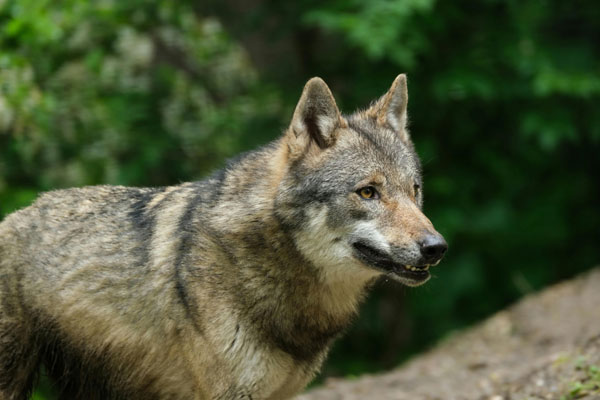Scientists debate whether reviving Dire wolves is de-extinction or mere recreation

[A wolf in the wilderness. Photo Credit to Pexels]
On a crisp 2024 October morning, for the first time in over 10,000 years, the haunting howl of a dire wolf once again echoed through a research facility in North America.
Scientists from Colossal Biosciences announced they have successfully created dire wolf-like creatures through advanced genetic engineering.
The company revealed that the first two male specimens, Romulus and Remus, were born on October 1, 2024, followed by Khaleesi, the first female specimen, who was born on January 30, 2025.
The original dire wolves, which were estimated to have become extinct around 10,000 years ago, were recreated through a combination of gene editing and cloning techniques.
Scientists extracted and sequenced DNA from fossilized dire wolves and used CRISPR-Cas9 technology to modify the DNA of modern gray wolves to resemble their ancient ancestors.
Using these modified cells, scientists then cloned the modified wolves, creating three pups.
However, because this process involves modifying gray wolves with dire-wolf-like characteristics, scientists believe the result is not true de-extinction, but rather a recreation or imitation of dire wolves.
The modifications are evident in several physical characteristics.
These creatures exhibit wider heads and more robust jaw muscles compared to modern gray wolves.
Aside from these physical modifications, their behavioral differences stand out the most.
All three specimens display a stronger instinct for independence, showing little interest in human affection or praise, rejecting activities such as belly rubs or other forms of physical attention.
Julie Meachen, a Professor of Anatomy at Des Moines University, argues that these pups are not true dire wolves, but rather a new subspecies resembling gray wolves with some dire wolf traits.
Beth Shapiro, a chief officer at Colossal Biosciences, agrees that the specimens are not genetically identical to their extinct predecessors.
Shapiro describes them as gray wolves with approximately 20 genetic modifications.
Despite not achieving precise de-extinction, the breakthrough presented by Colossal Biosciences may be a huge step toward true species revival.
While many attempts and approaches were made, the first successful de-extinction was dated back to 2003.
Scientists in Spain attempted to bring back a bucardo, a relative of wild goats that became extinct in 2000.
Although being named successful, the initial clone survived only 10 minutes due to fatal lung defects.
As of right now, the location of the dire wolf specimens is kept confidential for security reasons.
The company has confirmed they are housed in a 2,000-acre facility in the northern United States, alongside other research projects by Colossal Biosciences.
The company’s mission focuses on increasing biodiversity on Earth by reviving extinct animals, with current projects targeting the dodo, woolly mammoth, and dire wolf.
The discovery of these dire wolves creates a large milestone in the history of de-extinction research.
Whether scientists are recreating the past or building a new future, the return of the dire wolf marks the dawn of a new chapter in de-extinction science.

- Aiden Park / Grade 9 Session 9
- The Stony Brook School

![THE HERALD STUDENT REPORTERS [US]](/assets/images/logo_student_us.png)
![THE HERALD STUDENT REPORTERS [Canada]](/assets/images/logo_student_ca.png)
